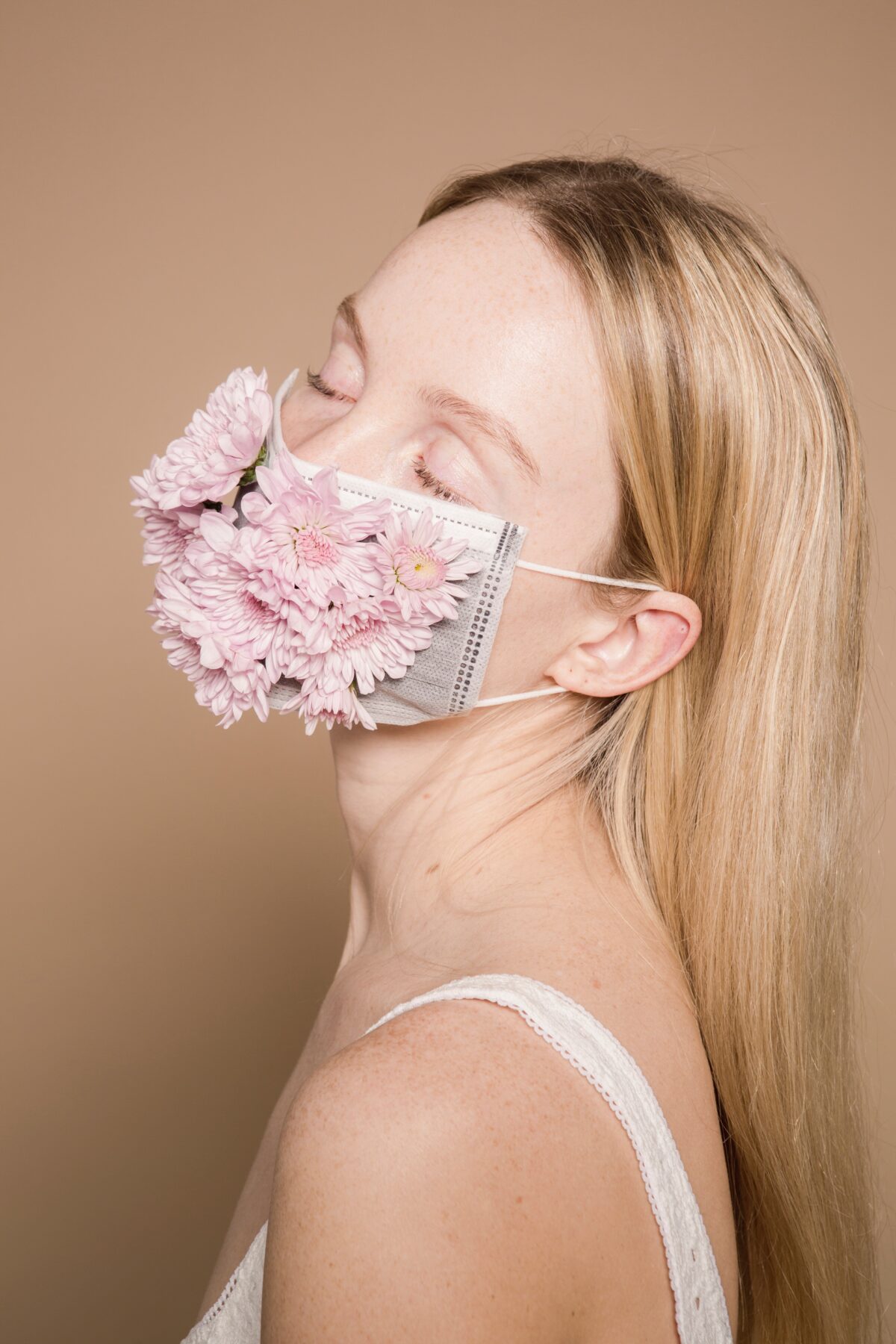I Get Yeast Infections Every Time I Take An Antibiotic. Is There Anything I Can Do About This?

Sometimes, after using antibiotics, you might notice that your vagina smells or feels different. You might even experience a burning or itchy sensation down there signaling that you have a yeast infection.
In this post, we are going to explain the link between antibiotics and yeast infections, and what the tell-tale signs of a yeast infection are. We also shed light on how you can effectively treat these infections when they occur or prevent them from arising in the first place.
What is a yeast infection?
Yeast infections, also known as candidiasis, happen when there is an overgrowth of yeast in a specific part of your body. They are usually caused by a type of fungus called candida albicans that live in damp areas around your body such as the mouth, vagina, and digestive tract.
Normally, candida is able to happily coexist with all the other natural organisms in your body without causing problems as long as there are healthy bacteria keeping it in check. But if something happens to disrupt the natural balance of this ecosystem, the Candida population can become unmanageable and result in a yeast infection.
If you have a mild yeast infection, it might go away on its own after a few days if your body successfully fights it off. However, in most cases, it will get worse over time if you don’t endeavor to treat it.
Types of yeast infections
The most common kinds of yeast infections that people can be affected by are:
Oral thrush
When you have a Candida infection in your throat or mouth, it is called oral thrush. The symptoms typically manifest as white or yellowish lesions or patches on the gums, cheeks, tongue, tonsils, or throat that may hurt or bleed when touched.
Thrush can also lead to sore throat, loss of taste, difficulty swallowing, and a burning sensation in the mouth.
Cutaneous candidiasis
The Candida fungus can overgrow on moist areas of your body like between fingers and toes, around the groin, under the breasts, in the armpits, or skin folds. The main symptom of cutaneous candidiasis or candidiasis of the skin is a rash that usually causes swelling, redness, and itching.
The infection may also cause the skin to crack or blisters and pustules to appear in the affected areas.
Vaginal yeast infections
When Candida cells in the vagina grow out of control, you can end up with a vaginal yeast infection. This condition is very common and easily treatable—3 out of 4 people with vaginas will develop a yeast infection at least once in their lifetime. Some may even experience it multiple times in their lives or suffer from recurrent yeast infections.
If you have a vaginal yeast infection, you may experience symptoms like
- Itching, soreness, or irritation in the vagina
- Burning or pain when urinating or having sex
- Swelling and itching around the vulva
- Watery vaginal discharge
- Thick, whitish-yellow vaginal discharge resembling cottage cheese
Do antibiotics cause yeast infections?
The work of antibiotics is to combat diseases and destroy harmful bacteria that could wreak havoc on your body. But in the process of doing this job, it can end up killing beneficial bacteria as well, making you more likely to develop a yeast infection.
The vagina has its own culture and a specific blend of bacteria and yeast that help keep it in healthy condition. One of such bacteria is Lactobacillus and they are responsible for maintaining the slightly acidic nature of the vagina, which limits the excessive growth of yeast.
When you take antibiotics to cure the infection and wipe out harmful bacteria, other healthy bacteria like Lactobacillus can become collateral damage. Your vagina might no longer have enough Lactobacillus to keep it acidic or offer protection against disease-causing organisms. This allows Candida to flourish and cause yeast infections.
Which antibiotics commonly cause yeast infections?
All antibiotics are not created equal. Some are more likely to disrupt your body’s balance of natural bacteria and leave you more prone to vaginal yeast infections. Broad-spectrum antibiotics fall into this category. This is because they are designed to wipe out a wide range of bacterial types, rather than specific species of bacteria.
The following types of broad-spectrum antibiotics are the most common culprits for drug-induced yeast infections:
Quinolones
These antibiotics are typically prescribed for hard-to-treat infections like UTIs, bronchitis, bacterial prostatitis, and nosocomial pneumonia. Examples of quinolones include
- Lomefloxacin (Maxaquin)
- Moxifloxacin (Avelox)
- Norfloxacin (Noroxin)
- Ciprofloxacin (Cipro)
Tetracyclines
Tetracyclines are usually prescribed to treat STIs, acne, skin infections, gum disease, eye infections, gastrointestinal infections, respiratory infections, and infections caused by tick bites. Some generic and brand name examples of tetracyclines include
- Doxycycline (Adoxa)
- Minocycline (Solodyn)
- Oxytetracycline (Terramycin)
- Demeclocycline (Detravis)
- Omadacycline (Nuzyra)
- Sarecyline (Seysara)
Amoxicillin
Amoxicillin is a penicillin-type antibiotic used in the treatment of a wide variety of bacterial infections. Some of them are pneumonia, bronchitis, infections of the nose, ears, skin, throat, or urinary tract, and stomach ulcers caused by Helicobacter pylori infection.
Carbapenems
These types of antibiotics are given by injection for the treatment of severe or multi-drug resistant bacterial infections like endocarditis, cystic fibrosis, febrile neutropenia, bacterial meningitis, as well as complicated urinary tract infections, intra-abdominal infection, and community-acquired pneumonia.
Examples of carbapenems include:
- Ertapenem (Invanz)
- Imipenem (Primaxin)
- Meropenem (Merrem)
- Doripenem (Doribax)
Can probiotics help prevent yeast infections?
Think of probiotics as beneficial bacteria or living microorganisms that are good for the body. Probiotics come in many different forms, one of which is Lactobacillus—a strain of bacteria that helps in treating and preventing yeast infections.
They can be found in certain types of food like yogurts with live cultures and are also available through supplements and suppositories. If you get recurrent yeast infections or you are taking an antibiotic that makes you more susceptible to candidiasis, using probiotics may be very effective in alleviating symptoms.
Although the lack of extensive research on the effectiveness of probiotics in eliminating and stopping vaginal yeast infections makes it difficult to conclusively prove that it works, existing data leans in favor of probiotics.
Studies have found that a mixture of yogurt and honey has similar effects in reducing the symptoms of yeast infections compared to traditional antifungal medications.
Using probiotic vaginal suppositories with prescription antifungal medication has also been found to increase the effectiveness of the antifungal agent and reduce the possibility of a yeast infection returning.
If you are looking for a way to rebalance your vagina’s pH level by reinforcing the lactobacillus population, probiotics might be the perfect solution for you. What’s more, current data hasn’t discovered any risks that can be connected with using probiotics as a treatment or prevention plan for yeast infections, so there is really no harm in trying.
Other ways to reduce the chances of a yeast infection while taking antibiotics
Doing the following things before, during, or after taking antibiotics can lower your odds of developing a yeast infection.
1. Be upfront with your doctor
If you get yeast infections whenever you use antibiotics or you experience recurring yeast infections, don’t hesitate to tell your doctor right away. They will likely prescribe fluconazole (Diflucan). This is an oral antifungal medication that you can take while using antibiotics to prevent yeast from growing out of control.
2. Eat yogurt
Yogurt is packed with natural probiotics that can help regulate your vaginal flora by replenishing all the healthy bacteria that may accidentally be killed by antibiotics. This equips your body to keep fending off candidiasis naturally. Endeavor to eat yogurt regularly, especially one that contains live cultures.
3. Try an antifungal cream
Antifungal cream or suppository can be very effective in preventing vaginal yeast infections from using antibiotics. Using one can help check the growth of yeast and many of them are available over-the-counter.
To achieve optimal results, ensure you follow the directions on the box and start using your antifungal at the beginning of your course of antibiotics.
4. Avoid baths
Yeast loves moisture and warmth. So, taking baths where you need to soak for long stretches of time can create an ideal environment for candida to multiply and overpower your vagina’s good bacteria.
Staying away from baths and sticking to showers, especially when taking antibiotics can go a long way in preventing the overgrowth of yeast.
5. Wear breathable fabrics
Breathable fabrics or underwear made of cotton are great at absorbing moisture or heat and keeping your vagina dry, cool, and less welcoming for yeast.
6. Stop using vaginal products with fragrance
Yes, fragrance makes things smell nicer, but they can throw your body’s natural pH levels off balance and promote an environment for yeast infections to develop. Avoid using scented pads, tampons, lube, bubble baths, laundry detergents, and any other products that could end up near your vagina. Always go for the fragrance-free option.
Over to you
It’s common for antibiotics to disrupt your body’s good bacteria and increase your chances of getting a yeast infection. However, you can take steps to limit this occurrence or prevent it from happening completely.
If you suspect that you might have a yeast infection or you are experiencing itching, burning, or redness around your vagina, speak to a healthcare provider right away so you can get a diagnosis and begin treatment.
Health Hero Pharmacy gives you unlimited virtual access to trusted medication specialists. You can chat with a pharmacist from wherever you are, on your phone, and they will help you figure out whether you have a yeast infection and prescribe the appropriate treatment.
Sources:
- https://www.mayoclinic.org/diseases-conditions/yeast-infection/symptoms-causes/syc-20378999
- https://www.medicalnewstoday.com/articles/326106
- https://www.healthline.com/health/yeast-infection-probiotics#TOC_TITLE_HDR_1
- https://www.healthline.com/health/yeast-infection-from-antibiotics#:~:text=Antibiotics%20attack%20good%20bacteria%20all,active%20cultures%20to%20your%20diet.
- https://www.webmd.com/women/remedies-yeast-infections
- https://my.clevelandclinic.org/health/diseases/5019-yeast-infections
- https://www.healthline.com/health/skin/cutaneous-candidiasis#symptoms




